The Central Coast’s
Perfect Host
Seventh-Generation Rancher Elizabeth Poett
Pens ‘The Ranch Table’ Cookbook
as Fourth Season of TV Show Debuts
By Matt Kettmann | October 5, 2023
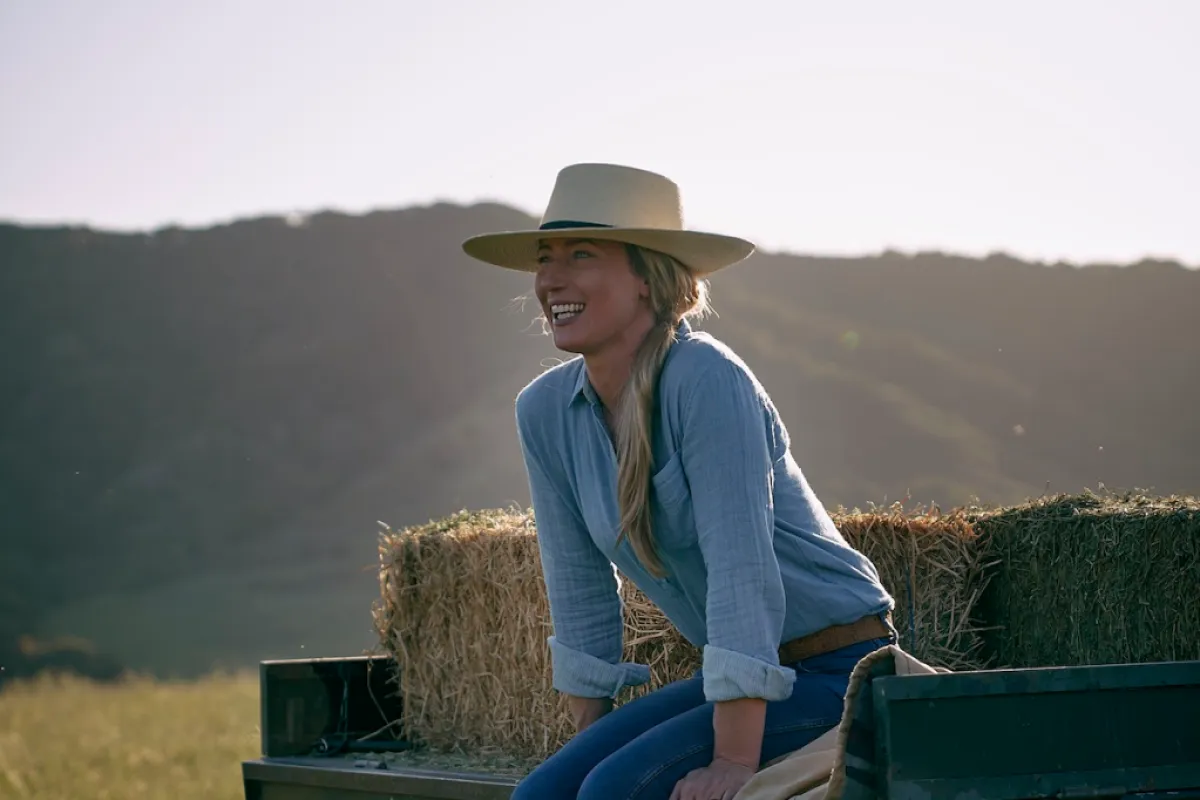
We are living through the eye of a zeitgeist.
You know the way that, for years, maybe even decades by now, you’ve been shopping at farmers’ markets, getting to know the folks who grow the food you eat and the wine you drink, and dining at restaurants whose menus revolve around what’s most fresh, flavorful, and grown just miles away?
Our shared Central Coast lifestyle is suddenly — or is it finally? or has it always quietly been? — an envious existence for much of the world. We’re on the cover of national magazines. We’re touted on menus from Kyoto to Copenhagen. We’re the focus of cookbooks. We’re the subject of TV series and documentaries.
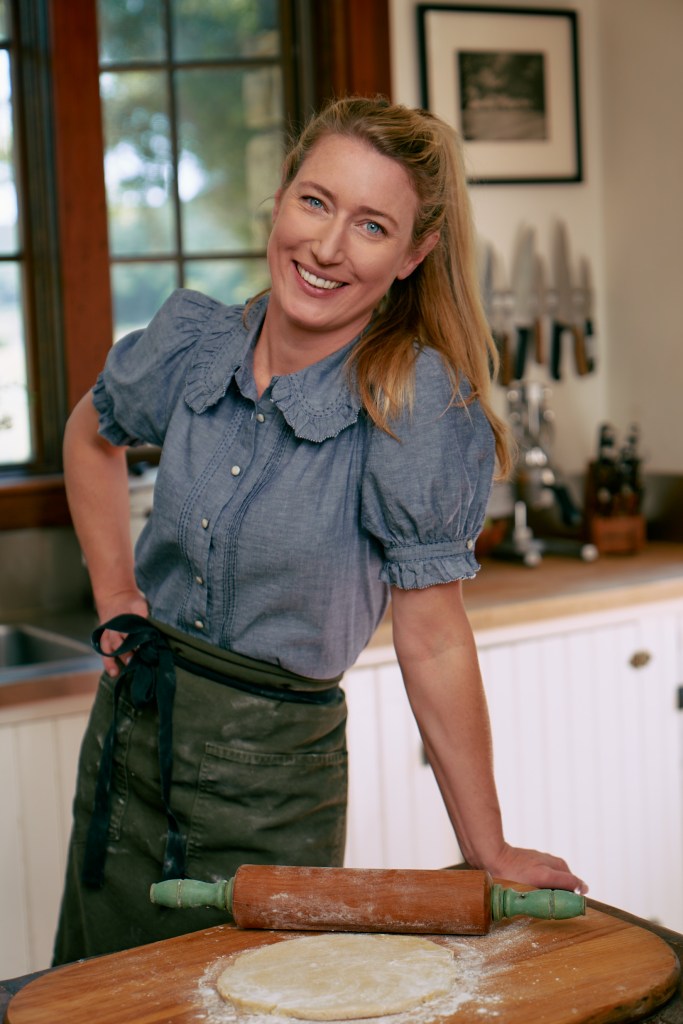
No longer is Santa Barbara the isn’t-it-charming, worth-a-weekend-visit capital of mostly rural backwater that extends north through row crops and ranchlands to the shores of the Monterey Bay. No longer do Los Angeles and San Francisco and even New York City merely acknowledge that their fancy foods are grown somewhere to the north or south or west. Today, whether we love or hate that the secret’s out, California’s Central Coast is a darling of the international food, drink, and farming scene.
Into this milieu comes Elizabeth Poett, a happy, humble, and achingly authentic hometown host who deftly conveys, with charm and circumstance, the real reasons that this region is unique and special.
Two summers ago, the rancher, mother, home cook, and seventh-generation descendent of Santa Barbara’s “El Gran Capitán” José de la Guerra debuted as the star of her own cooking show on the Magnolia Network, which premiered the fourth season of her popular Ranch to Table series last weekend. On Monday, in the culmination of a project that actually began before the show was even conceived, Poett published her first cookbook, The Ranch Table, and, just this morning, was beamed onto breakfast tables and coffee shops across the country as a guest on The Today Show.
Featuring a year’s worth of seasonal recipes set amid the typical range of gatherings and outings her family experiences throughout the calendar, the nearly 300-page, intimately photographed book simultaneously delivers a legacy’s worth of stories about Rancho San Julian, the 14,000-acre ranch that spreads along Highway 1 from 101 to Lompoc where Poett’s ancestors have raised beef since 1837.
“My hope is that the book really introduces people to what ranch life is like over the course of a year,” Poett told me during one of our many talks. “I want people to write notes in the book and underline things in the book and have flour get stuck in the book. I love cookbooks that you can tell have been used and loved. Those are my favorites.”
Authentic Elizabeth
Unlike many of the fabricated faces that dominate our screens these days, there’s nothing fake about the way that Elizabeth Poett is portrayed in the scenes of Ranch to Table or on the pages of The Ranch Table.
She’s really in that kitchen every day, preparing food for her family, friends, and neighbors. The dishes are truly based on recipes or techniques that have passed down through the ages, truly reliant on ingredients that she hand-harvests from the yard. She knows how to weld fences and maneuver a tractor to dig pits for cattle guards. She spends most of her days cruising around the ranch on an ATV or horseback, checking on pregnant cows, errant steer, and burly bulls. And when she does, Elizabeth wears the same blue jeans and that same style of flat-billed, palm-straw cowboy hat that she sports on the cover of her book.
“I never wanted it to be hokey or like a country show where I talk with a twang,” said Elizabeth of the series, which debuted in August 2021. “They’ve done a beautiful job of capturing the essence of a California ranch, and I’m super proud of it. But my main goal is for people to find joy in cooking.”
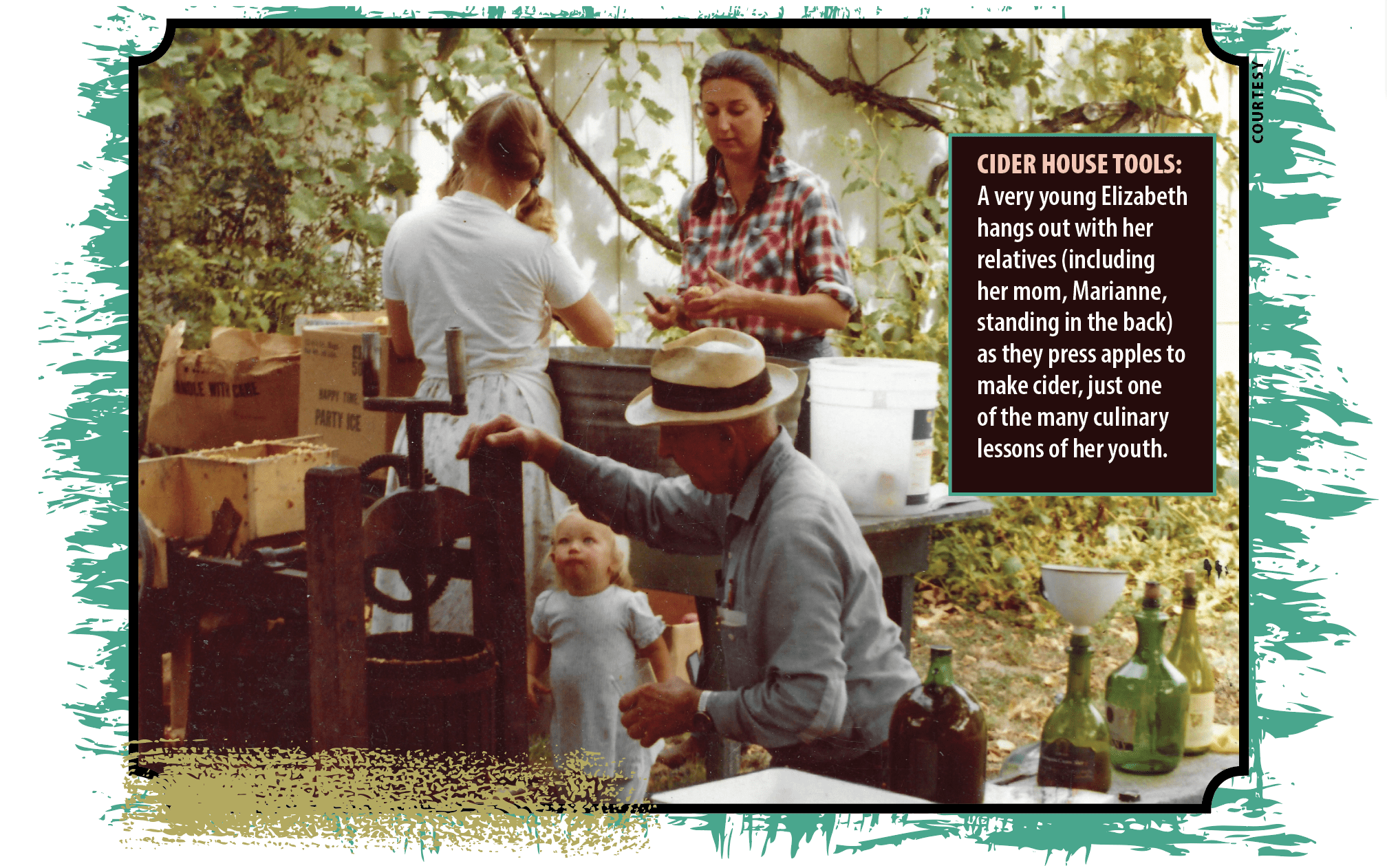
Even her sunny personality beams through the lens crystal-clear: unpretentious and funny, warm-hearted and welcoming, conscious of her roots yet caring about the future. It’s all authentically Elizabeth, and I can confidently claim as much because I’ve known her for most of both our lives.
Her mom, Marianne Partridge, hired me straight out of college almost 25 years ago as a proofreader for this newspaper, and Elizabeth, then just graduating high school, was a familiar face in the halls of our second-floor office at 1221 State Street. Marianne became my mentor, opening doors to the blessed-if-stressed life of journalism, and I followed Elizabeth’s movements like I would a cousin’s: college in Ohio, work in New York and Los Angeles, and an eventual return to the ranch about 15 years ago, when her dream to build an organic beef company intersected with my increasing interest in writing about farming and food.
On a recent Monday, I myself returned to Rancho San Julian, where I’ve been countless times over the past three decades. Elizabeth invited me up for lunch with her mom, who’s still my boss; as well as her dad, Jim Poett; and husband, Austin Campbell, both of whom have become friends of mine over the years. I brought figs and caviar limes from my backyard — neither of those men knew how to eat them, to our collective amusement — and I’d later leave with Marianne’s lavender hydrosol for my wife, who’s been spraying that stuff everywhere since before we were married.
Austin answered my random questions about hay as he led me toward their house, which I’d only seen from afar a couple times. Inside was the kitchen that’s center stage in Ranch to Table, fresh in my mind from the four episodes I had binge-watched that morning. As Elizabeth finished her onion-braised beef sandwiches with slaw (recipe on page 15) and Marianne tended to the tomatoes and mozzarella in pesto dressing (page 156), they explained how exhausting the multi-week TV shoots could be, how many hours of footage are cut to hone the half-hour episodes, and how much their kitchen was enhanced to work for the small screen.
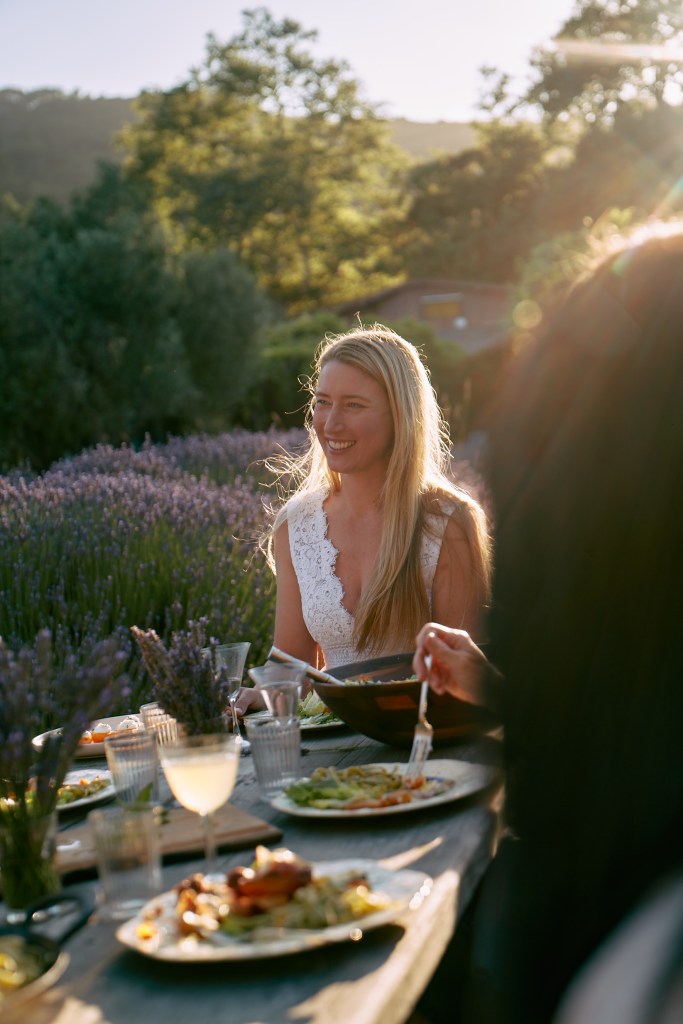
The rather tall ceilings are much more spacious than the low-slung kitchen where Elizabeth learned to cook from Marianne, whose home is just a five-minute walk down the hill and through a sycamore-pocked meadow. “Elizabeth is a great cook,” Marianne told me over the phone a few days before my visit, reminding me that her daughter never attended culinary school. “I noticed it many years ago when I was sick and she came in and made dinner. I thought, ‘This is better than I make it.’ ”
At a picnic bench on the patio, under the ancient oaks that shade the entire ranch, our table talk jumped from outdoor kitchens and too many tools in the wrong places to missing pets and wild animals, like sheep and bobcats in the field over yonder and pigs and turkeys that have been showing up as of late outside of their homes. The adjacent living arrangements must feel cramped at times, even on such a big ranch, but the couples seem to relish living so near each other, if only because Elizabeth and Austin’s young sons, Hank and Jack, get to see their grandparents on a daily basis.
They’re closely tied to the rest of their extended family, many of whom are co-owners and residents of the ranch. She checked with them all before agreeing to do the show. “The family said, ‘Yes, sure, you can do it,’ ” explained Jim, “ ‘and we’re 100 percent behind you.’ ”
Like Elizabeth herself, Jack and Hank are close friends with their second and even third cousins, thanks in part to family reunions that Marianne helped revive. Such ties provide a strong fabric to support their intertwined destinies.
“We all have the same love for this ranch,” said Elizabeth, who’s witnessed other family ranches fall to subdivisions and development, like her father did in his generation. “It’s a special place, not only because the place is special, but because it’s been in our family for so long. I’ve seen how changes are made and how the family works together. I feel lucky that my family believes in the same values.”
Making the Rounds
After lunch, Elizabeth took me on her usual rounds, stopping first by Jim’s vineyard up the hill, where pinot noir and chardonnay are being harvested for the first time this year, quite possibly as you read this. It’s the latest commercial enterprise for Rancho San Julian, which has complemented the constant cattle concern with wool, garbanzo and lima beans, hay fields, lavender, and various orchards through the generations.
“Diversification, sustainability, regenerative agriculture — these are all such hot topics and buzzwords, but it’s truly how we have lived,” explained Elizabeth. “It’s the reason why this ranch is still in our family.”
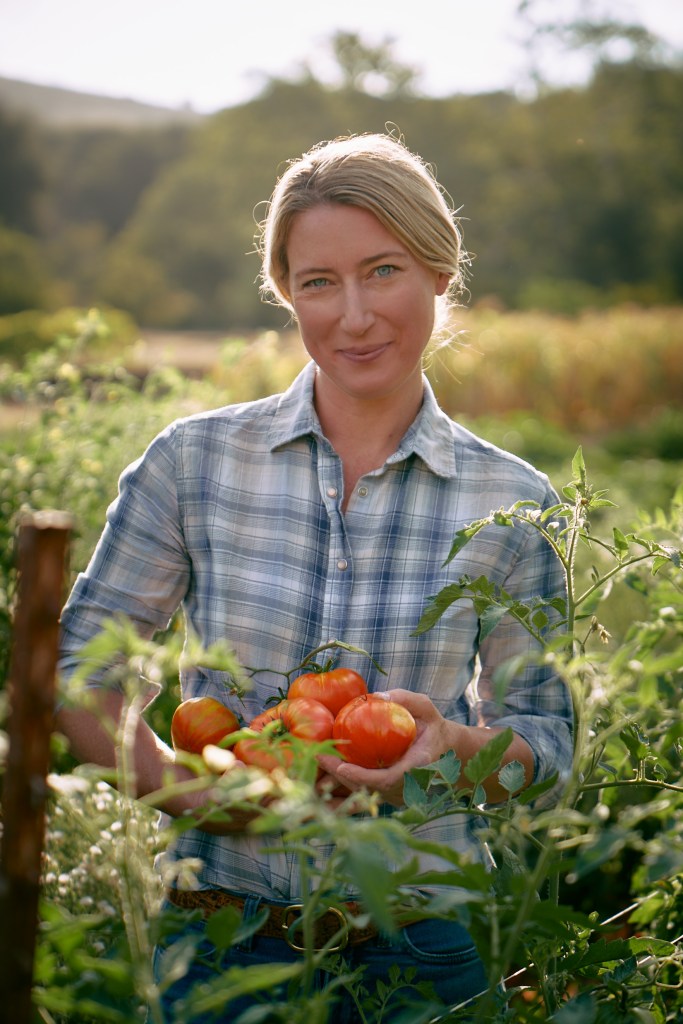
She told me as much during a long phone call, but the family’s ruminations about the meaning of it all tend to be snipped when they’re hanging together, more loaded with subtext than substance. When I asked Jim how much time he spends on the vineyard — a five-year-old project for which I’ve been partially blamed by his wife (a k a my boss) for the time and money required — he replied, “Oh, not much. Every day, but….” Elizabeth, right on cue, guffawed, “He’s always here.”
Next, she took me down to “The Casa,” which is the heart of Rancho San Julian, its white walls and red-hued roofs visible from Highway 1. I’ve been there many times before, for Cinco de Mayo parties and work barbecues and weddings, so we laugh about the tour being slightly awkward, as she knows that I already know much of what she’s telling me. That causes us both to acknowledge that working on this whole article — a cover story on the surprise-famous daughter of the woman who’s been my boss for my entire adult life, making Elizabeth a sort of work-sister — has been a bit bizarre.
But I didn’t actually realize that the thick adobe walls of the “Cowboy Dining Room” date back to 1806, when the ranch — prior to the De la Guerra era — was a restaurant for stagecoach riders on the route between Mission Santa Barbara and Mission La Purísima. Nor had I checked out the framed Haas Brothers shopping list from 1896 — ox tongue, chicken liver, Green Mountain maple syrup, Colman’s mustard, etc. — or the old wool barn, where graffiti from centuries ago is scratched into the wooden beams.
With a curious twinkle in her eye, Elizabeth gripped the hefty metal hand-shears that those old shepherds used, squeezing them like exercise grippers and wondering how strong their arms must have been. The scene reminded me of the episode in season three where she’s churning vanilla-bean ice cream with an old-style wooden contraption. She readily admits that it’s not efficient at all — “Let’s be honest, using an automatic ice-cream maker is totally the way to go” — but then explains to the camera, “I have a thing for old things.”
That goes for recipes, like the ones left to her by her grandfather Harold Poett, or “Grandpopples.” Handwritten on index cards, often with notes scribbled next to the ingredients, these are the recipes for foods he liked to cook, including some dishes that were passed down from his own mother. “To me, that was the biggest gift — cooking his food, seeing his handwriting,” said Elizabeth. “My boys will never meet him, but they will be able to eat the food that he loved. It sounds sentimental, but it’s very much something that brings me joy.”
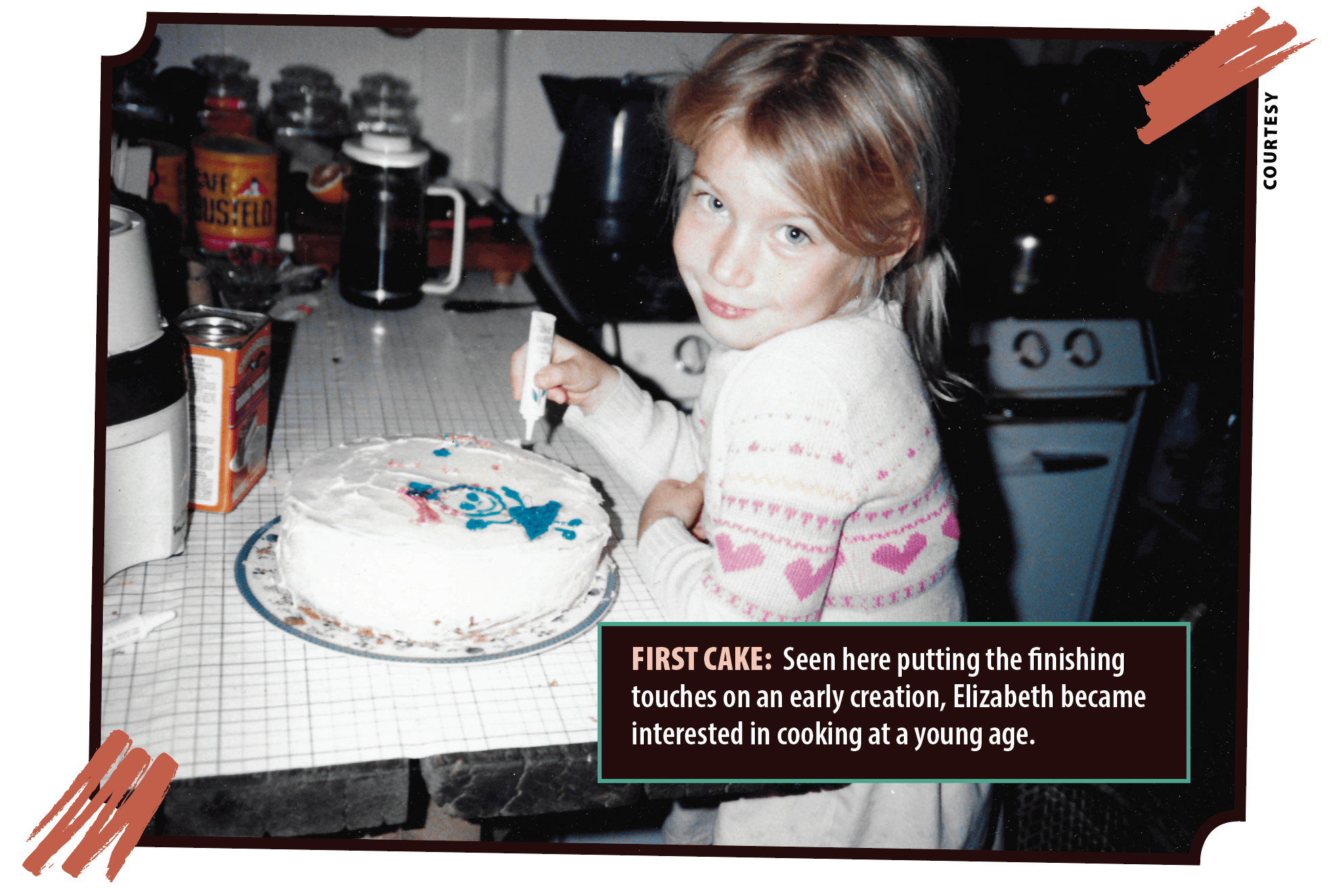
We finish our afternoon checking on just-born calves and still-pregnant cows on the Cuevitas, a corner of San Julian where the cattle congregate around small caves. I’m peppering her with questions about cattle biology and business, both far more complex than most hamburger enthusiasts ever appreciate. Her family’s rather large herd — which revolves around 800 mother cows spread across their ranch and nearby leased lands — is thriving, thanks to genetics-focused breeding protocols developed years ago by Jim and now overseen by Austin, who’s become the primary cowboy in charge.
Aside from four-wheelers and cell phones, much of cattle ranching is the same as it was a century or two ago, and Elizabeth reminds her audience of that constantly. The introduction chapter to her cookbook includes a picture on the ranch from nearly 100 years ago of meat grilling on a Santa Maria–style grate suspended over an oak-filled firepit in the ground.
“It shows that this is not new; this is not something that I created,” she said. “It’s something that’s been around forever, and it’s a great, fun way to cook everything from vegetables to bread. This is really who we are.”
Ranch Realities and Rewards
It’s easy to watch Ranch to Table or flip through The Ranch Table and conclude that Elizabeth Poett lives a charmed life.
“It’s a beautiful life, but it’s not a simple one,” she clarified. “Take
something as simple as plumbing. We can’t call a plumber. We have to fix it ourselves. Not only do they not understand our plumbing system, but we can’t afford to call a plumber every time we have issues. We’d be bankrupt in a heartbeat.”
Her parents’ notion of giving their daughter a better, or at least easier, life is probably why she wasn’t raised to inherit the business. “My parents never put that pressure on me,” she said. “If anything, it was quite the opposite. They’re smart, and the cattle industry is tough.”
Not everything was so laissez-faire. “I wanted to dance ballet,” recalled Elizabeth, “but my mom said, ‘You’re gonna dance flamenco. That’s your heritage, and it will give you the attitude you need in life, which is: Pucker up, you’re on your own, and keep going.’ ”
In the back of her mind, Elizabeth knew that she’d return to the ranch one day, which is what set her free to go to Kenyon College in Ohio, study in Spain, and work in New York City. That’s where she was living in 2006, sharing a tiny second-floor apartment right above the dumpster. “You’d look outside, see a wall, and then you’d see trash coming down,” she remembered, not fondly.
She fled that winter’s freezing cold to visit her parents one weekend, and she had an epiphany while riding horses with her dad in the setting sun. “It was one of those moments that was just like, ‘Ohhh, what am I doing? I need to come home,’ ” she remembered, more fondly. “It was really a realization.” She left Manhattan about a month later.
Elizabeth couldn’t just come home and work as a cowgirl for her dad. “I wasn’t sure where I fit in on the ranch. I wanted to make my own place here,” she explained. “How can I make my own living and also make the ranch money? To preserve this ranch and make it better for the next generation — that’s my job.”
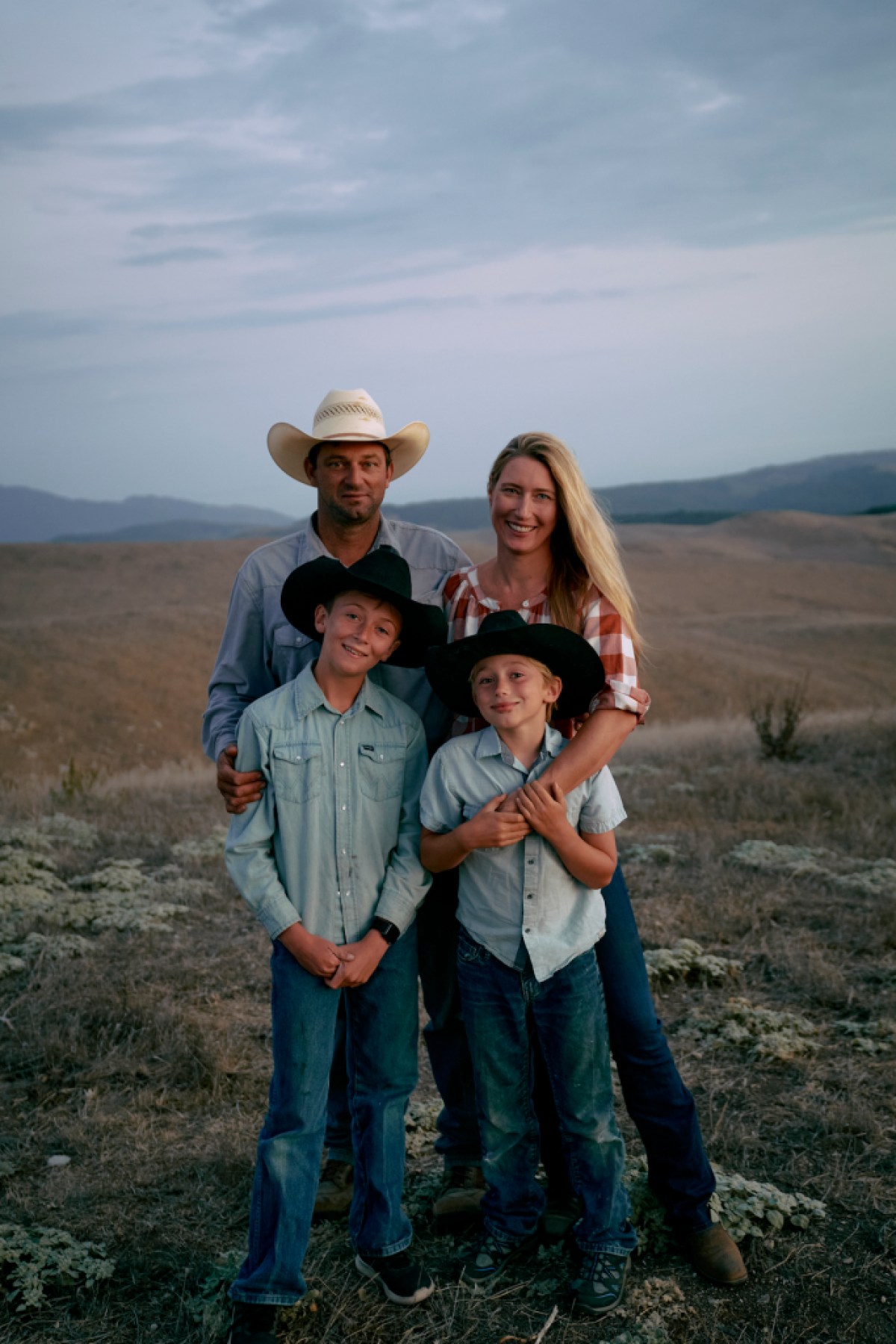
After some time in Santa Monica and Santa Barbara, where a course with Women’s Economic Ventures helped her write a business plan, Elizabeth launched the Rancho San Julian brand as an organic beef company in 2007. She bought her own steer, navigated the confusing regulations required to process the meat, and started selling it at farmers’ markets near and far.
“It was a much bigger project than I thought,” said Elizabeth. She still sells beef under the label but steadily pulled back in recent years to focus on raising her kids and explore these other enterprises.
She met Austin in those fledgling beef-business days, which is what her dad believes convinced Elizabeth to make the ranch her home. “I think what stuck it was Austin,” said Jim. “They met at a branding, and it went reasonably quick after that.”
In 2017, as the drought decimated her beef business, Elizabeth created The Ranch Table as an events and digital media company, becoming a connective tissue and occasional venue for many of Santa Barbara County’s small farmers. That caught the attention of the Magnolia Network, which filmed the pilot episode in the depths of COVID, their crews the first people to enter the Poetts’ home in six months. The show was an immediate hit, leading to two follow-up seasons and now the fourth, which debuted on October 1.
Almost unbeknownst to them — who watches what these days is almost impossible to know — Jim and Marianne had a famous daughter, and they were being stopped by grocery store clerks who wanted to know if they were related to Elizabeth. One nurse saw her own upbringing and lifestyle in the scenes of Ranch to Table. “It’s nice to see us shown,” she told Marianne, who explained, “It’s not in a glitzy way, but it’s just people saying, ‘Hey, that’s our life.’ That has been good.”
Not the most talkative man to begin with, Jim is probably the least enthused about having camera crews roll through his backyard and barns. He quickly learned to swear a lot when the cameras were rolling to ensure his scenes were left on the cutting-room floor. “To be thumbing through what you can watch and see my daughter’s face come up?” he laughed. “It’s horrifying!”
But of course he’s proud. “She’s putting real life to what is often seen as kind of alien,” he said of the cowboy way, which he adopted more than 40 years ago upon ditching his New York City journalism career (where he met Marianne) to take over his family’s cattle operations the year Elizabeth was born. Marianne agreed, explaining, “The people who are actually in agriculture, primarily these old ranchers, are really thrilled to see ranching life shown to not be some anachronism or cutesy thing, but as lots of hard-working, skilled people.”
No one appreciates that more than Jim. “It’s hard work, and she’s doing it well,” muttered the veteran rancher–slash–neophyte vintner. “I do wish she’d mention the grapes.”
Inspiring Tomorrow’s Ranchers
The Ranch Table as a cookbook was an idea that Elizabeth started working on long before Magnolia’s camera crews showed up. But when the show proved popular, the cookbook got serious, with an imprint of HarperCollins coming on as publisher. She enlisted lifelong friend and cookbook author Georgia Freedman to help her craft the words and asked the TV show’s director of photography BJ Golnick to handle the imagery. “He understood what my vision and my look was,” she said. “I wanted it to be colorful and be true to my cooking, to feel very much like who I am.”
The resulting 292 pages and 120 recipes — mostly unfussy dishes based on fresh ingredients, often involving live fire and Spanish-Mexican-Californio influences — are spread over four seasons and more than a dozen settings, such as “Breakfast After a Hunt,” “Cider Press Potluck,” and “Fiesta Family Reunion.” Interspersed between the recipes are Elizabeth’s essays about her family’s history, life on the ranch, and her thoughts on tools, entertaining, and cooking, all told in personal, engaging prose.
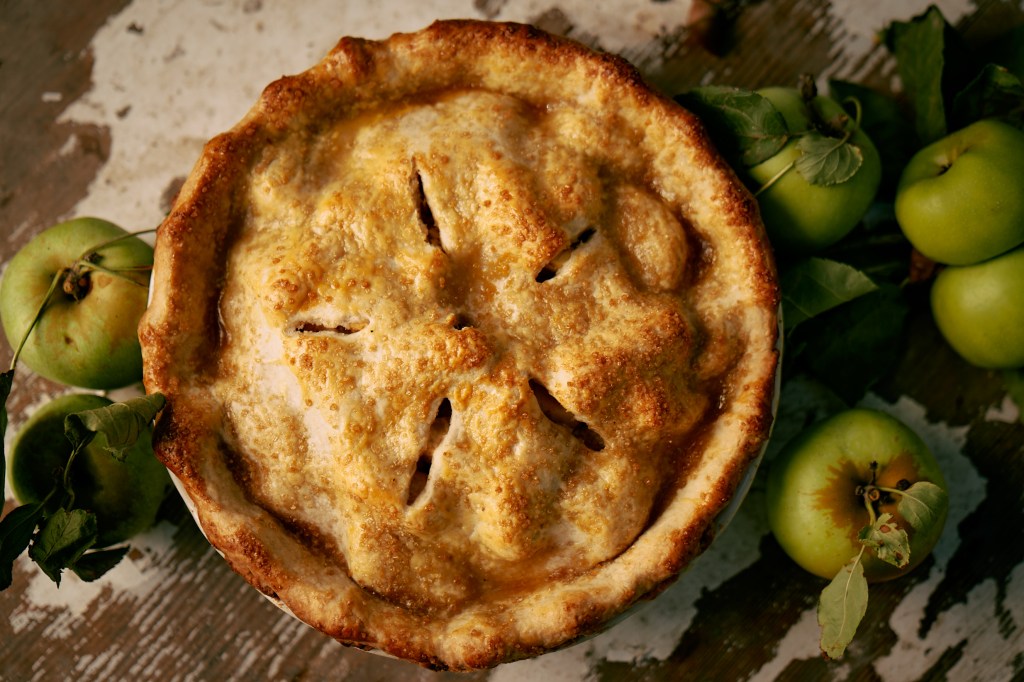
If The Ranch Table is received as well as the show — odds are good; her Today Show appearance is being followed by book-signings in Brooklyn, Hollywood, San Francisco, Waco, Dallas, and Chicago — Elizabeth can expect similar support as she receives from fans of Ranch to Table. “I have gotten letters from kids all across America saying how much they love the show and that they want to cook and be ranchers when they grow up,” she said. “I hang them up on my wall because it’s so touching. The whole reason I wanted to do the show was to be able to share my voice about ranching and agriculture and food.”
Her increasingly amplified message about the glories of Central Coast life is clearly being heard, and she’s not planning to turn the volume down anytime soon. Also hanging on her wall, just outside of that famous kitchen, is a shower of index cards with names of dishes that aren’t in The Ranch Table.
“Oh,” she smiled when I pointed them out, “those are for the second book.”





You must be logged in to post a comment.